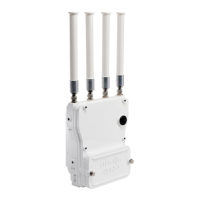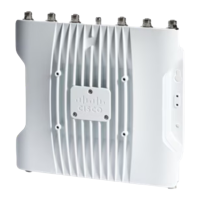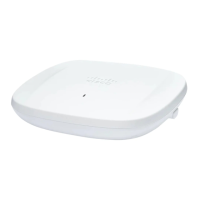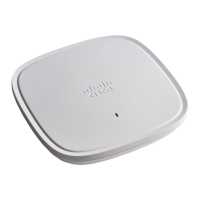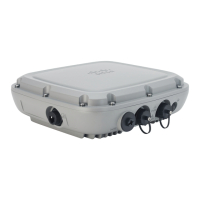11
Getting Started and Product Document of Compliance for the Cisco Catalyst IW6300 Heavy Duty Series Access Points
Antennas
Antennas
The data sheet lists the antennas that can be used by Cisco Catalyst IW6300 Heavy Duty Series Access Points. All
antennas where assessed together with the equipment against the requirements of the R&TTE directive.
Depending on the country a different regulatory limit might be applicable. It is therefore the responsibility of the end user
to select a power level that, together with the antenna, results in an eirp (radiated power) level that is below the applicable
limit.
Note: Antenna caps must be installed when an antenna is not in use (maximum torque range: 6.2-9.7 in-lbs).
Antennas installed within a hazardous locations environment must be passive only, rated IP66/67 and compliant to
IEC 60079-0.
Avoidance of Electrostatic Discharge
In order to prevent an electro static discharge within a hazardous location, only touch with an insulating object or use
means to continuously drain off electrostatic charges in the installation.
Performing Maintenance
The access point requires minimal periodic or preventive maintenance as it has no moving parts, filters, lubricants, or
mechanical contact components. However, when installed in a hazardous location, periodic inspections should be
conducted in order to ensure that the access point is operating satisfactory. This section provides information about
performing maintenance on an access point installed in a hazardous location.
Removing the Access Point from Service
When removing an access point from service, make sure you remove power from the access point before opening the
cover and disconnecting the power input wiring. When removing the AC wiring, remember that the ground connection
should be the last to be disconnected.
Conducting Periodic Inspections
The access point should be inspected periodically to ensure normal and airtight operation in the hazardous location
environment.
Inspection Routine Periodicity
Inspect O-ring seals and exterior electrical connections for aging, corrosion, and low
ground resistance.
Every 3 years
Inspect cover and liquid-tight adapter gaskets for airtightness. Every 5 years
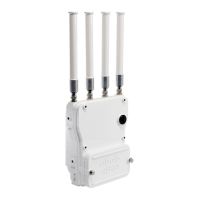
